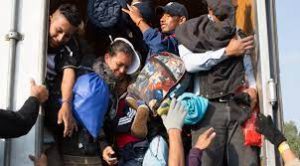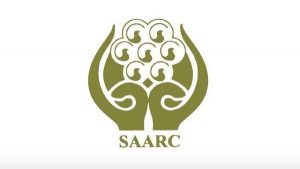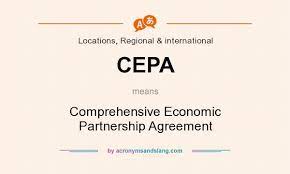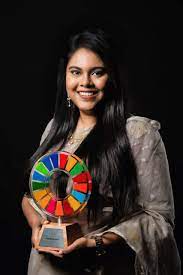Today Current Affairs: 23rd September 2021 for UPSC IAS exams, State PSC exams, SSC CGL, State SSC, RRB, Railways, Banking Exam & IBPS, etc
Table of Contents
Substitute For Single-Use Plastics:

IISc researchers find a way to substitute for single-use plastics.
- By combining non-edible oils and cellulose extracted from agricultural stubble, the researchers made biodegradable, multi use polymer sheets.
- This can make a substitute for single-use plastic that can, in principle, help mitigate the problem of accumulating plastic waste in the environment.
- In 2019, the Union government in a bid to free India of single-use plastics by 2022, had laid out a multi-ministerial plan to discourage the use of single-use plastics across the country.
- A government committee has identified the single use plastic (SUP) items to be banned based on an index of their utility and environmental impact.
- It has proposed a three-stage ban:
- The first category of SUP items proposed to be phased out are plastic sticks used in balloons, flags, candy, ice-cream and ear buds, and thermocol that is used in decorations.
- The second category, proposed to be banned from July 1, 2022, includes items such as plates, cups, glasses and cutlery such as forks, spoons, knives, straws, trays; wrapping and packing films used in sweet boxes; invitation cards; cigarette packets; stirrers and plastic banners that are less than 100 microns in thickness.
- A third category of prohibition is for non-woven bags below 240 microns in thickness. This is proposed to start from September next year.
Central Bank Digital Currency (CBDC):

The Reserve Bank of India has been working on a phased implementation strategy for a CBDC and the pilot may be launched by the end of this year.
- The financial advisory services firm has listed four major use cases of CBDC in the Indian context.
- This includes:
- ‘Fit-for-purpose’ money used for social benefits and other targeted payments in a country.
- For such cases, the central bank can pay intended beneficiaries pre-programmed CBDC, which could be accepted only for a specific purpose.
- CBDCs could be used for faster cross-border remittance payments. International collaboration among the major economies of the world, including India, could help create the necessary infrastructure and arrangements for CBDC transfer and conversion.
- Payment instruments could be made available for payment transactions to be made via CBDC. Furthermore, universal access attributes of a CBDC could also include an offline payment functionality.
- Instant lending to micro, small, and medium enterprises (MSMEs) in India can be possible with the help of CBDC.
- An official digital currency would reduce the cost of currency management while enabling real-time payments without any inter-bank settlement.
- India’s fairly high currency-to-GDP ratio holds out another benefit of CBDC — to the extent large cash usage can be replaced by CBDC, the cost of printing, transporting and storing paper currency can be substantially reduced.
- The need for inter-bank settlement would disappear as it would be a central bank liability handed over from one person to another.
CBDC or National Digital currency:
- A Central Bank Digital Currency (CBDC), or national digital currency, is simply the digital form of a country’s fiat currency. Instead of printing paper currency or minting coins, the central bank issues electronic tokens.
- This token value is backed by the full faith and credit of the government.
Parliamentary Privileges:

Vice-President and Rajya Sabha Chairman M Venkaiah Naidu has said that disrupting parliamentary proceedings amounts to contempt of the House and it cannot be claimed as a privilege.
- This is the first time that a presiding officer of any legislature in the country has taken a public position on the issue of disruptions in the Parliament.
- The productivity of Rajya Sabha has been quantified since 1978. During the first 19 years till 1996, the productivity of the House has been over 100 per cent, but it has begun to decline since then.
- While the House clocked an annual productivity of over 100 per cent during 16 out of these 19 years, it was so only in two years — in 1998 and 2009 — that it clocked 100 percent productivity in the preceding 24 years. Rajya Sabha has not clocked 100 percent productivity even once in the past 12 years.
Parliamentary Privileges:
- Parliamentary Privileges are certain rights and immunities enjoyed by members of Parliament, individually and collectively, so that they can “effectively discharge their functions”.
- Article 105 of the Constitution expressly mentions two privileges, that is, freedom of speech in Parliament and right of publication of its proceedings.
- Apart from the privileges as specified in the Constitution, the Code of Civil Procedure, 1908, provides for freedom from arrest and detention of members under civil process during the continuance of the meeting of the House or of a committee thereof and forty days before its commencement and forty days after its conclusion.
Motion against breaches:
- When any of these rights and immunities are disregarded, the offence is called a breach of privilege and is punishable under law of Parliament.
- A notice is moved in the form of a motion by any member of either House against those being held guilty of breach of privilege.
Single Window System For Investors:

The Ministry of Commerce and Industry has launched the national single window system for investors and businesses to improve Ease of Doing Business (EoDB).
- India was placed at 63rd position in the World Bank’s ease of doing business report, 2020 out of 190 countries. Recently, the World Bank has decided to discontinue ‘Doing Business’ reports.
- DPIIT along with Invest India initiated the process of developing the portal as a National Single Window System (NSWS).
- DPIIT (Department for Promotion of Industry and Internal Trade) comes under the Ministry of Commerce and Industry.
- Invest India is the National Investment Promotion and Facilitation Agency of India and acts as the first point of reference for investors in India.
- The portal offers a single dashboard, allowing businesses to apply for clearances, track progress and respond to queries.
- It would become a “one stop shop” for state and Central government compliances and bring transparency, accountability and responsiveness in the ecosystem.
- It will also offer a Know Your Approvals service to inform businesses of the details of all the approvals they need to obtain as well as a common registration form, document repository and e-communication module.
- It will provide strength to other schemes e.g. Make in India, Startup India, PLI scheme etc.
FDI Inflows:

Foreign Direct Investment (FDI) inflows grew 62% during the first four months (April-July period) of current FY 2021-22 over corresponding period last year (2020).
- India attracted a total FDI inflow of USD 27.37 billion during the four months.
- In the FY 2020-21, India saw growth of 10% (to $82 bn) in FDI.
FDI Equity:
- FDI equity inflow grew by 112% in the April-July period of FY 2021-22 (USD 20.42 billion) compared to the year ago period.
Top Sectors: - The Automobile Industry has emerged as the top sector with 23% share of the total FDI Equity inflow followed by Computer Software & Hardware (18%) and Services Sector (10%) respectively.
Top FDI Destinations:
- Karnataka is the top recipient state for the period with 45% share of the total FDI Equity inflows followed by Maharashtra (23%) and Delhi (12%).
Foreign Direct Investment:
- FDI is the process whereby residents of one country (the home country) acquire ownership of assets for the purpose of controlling the production, distribution and other activities of a firm in another country (the host country).
- It is different from Foreign Portfolio Investment where the foreign entity merely buys stocks and bonds of a company. FPI does not provide the investor with control over the business.
Climate-Induced Migration And Modern Slavery:

International Institute for Environment and Development (IIED) and Anti-Slavery International released a report named Climate-Induced Migration and Modern Slavery.
- IIED is a policy and action research organisation promoting sustainable development and linking local priorities to global challenges. It is based in London, UK.
- Anti-Slavery International is the world’s oldest international human rights organisation, founded in 1839. It is the only British charity exclusively working to eliminate all forms of slavery.
Increasing Inequality:
- Climate change is devastating the planet, leading to intensifying global inequality as well as disputes over land, water and scarce resources.
Increased Migration:
- People are being driven to migrate within and across borders in search of resources and income.
- As many as 55 million people were internally displaced within their countries due to extreme weather events in 2020.
- The World Bank estimates that, by 2050, the impact of the climate crisis, such as poor crop yields, a lack of water and rising sea levels, will force more than 216 million people across six regions, including sub-Saharan Africa, south Asia and Latin America, from their homes (Groundswell Report).
Modern Slavery:
- Climate change-induced extreme weather events put women, children and minorities at risk of modern slavery and human trafficking.
- The phenomenon is on the rise in India, among other countries.
- 40.3 million people are living under slavery in the world.
- Drivers of vulnerability to modern slavery are complex and impacted by many layers of risk. pWhile several socio-economic, political, cultural and institutional risks shape vulnerability, they are increasingly considered to be made worse by climate change impacts and environmental degradation.
SAARC:

A meeting of foreign ministers from the South Asian Association for Regional Cooperation (SAARC) countries, which was set to be held in New York on Saturday, has been cancelled.
- Sources report that the member states were unable to agree upon the participation of Afghanistan, with Pakistan and India in particular at loggerheads over the issue.
- After no consensus could be formed, Nepal, the ‘host’ of the summit, officially cancelled the meeting.
- The Taliban has not been recognised as the official government of Afghanistan by any SAARC countries barring Pakistan. Several top Taliban leaders are blacklisted by the US and/or designated as international terrorists.
- Apart from Pakistan, which has close ties to the Taliban, particularly its violent subgroup, the Haqqani Network, none of the other SAARC members recognise the Taliban and some, like India, have openly questioned their legitimacy.
Formation of SAARC:
- SAARC is a regional inter-governmental organisation of South Asian countries namely, India, Bangladesh, Bhutan, the Maldives, Nepal, Pakistan and Sri Lanka.
- Afghanistan joined the bloc in 2007, under its then President Hamid Karzai.
- SAARC also includes nine formally recognised observers including the European Union, the US, Iran and China.
Comprehensive Economic Partnership Agreement (CEPA):

India and UAE’s Commerce Minister have formally launched negotiations on the India-United Arab Emirates Comprehensive Economic Partnership Agreement (CEPA).
- The first round of CEPA negotiations will be held on 23-24 September 2021.
- CEPA will create new jobs, raise living standards, and provide wider social and economic opportunities in both nations.
- A new strategic economic agreement is expected to increase bilateral trade in goods to USD 100 billion within five years of the signed agreement and increase trade in services to USD 15 billion.
- The UAE is currently India’s third-largest trading partner with bilateral trade in 2019/2020 valued at USD 59 billion. The UAE is also India’s second-largest export destination after the US, with exports valued at approximately USD 29 billion in 2019-2020.
- India was the UAE’s second-largest trading partner in 2019, with bilateral non-oil trade valued at USD 41 billion.
- The UAE is the eighth-largest investor in India, having invested USD 11 billion between April 2000 and March 2021, while investment by Indian companies in the UAE is estimated to be over USD 85 billion.
Sign Language:

The New Delhi- based Indian Sign Language Research and Training Centre (ISLRTC), an autonomous body within the Department of Empowerment of Persons with Disabilities (Divyangjan) under the Ministry of Social Justice and Empowerment, will be celebrating ‘Sign Language Day’ on September 23, 2021.
- Ever since the United Nations declared 23rd September as the International Sign Language Day, the ISLRTC has celebrated it every year.
- Sign language not only plays an important role in educating people, but also is vital in creating employment and vocational training for persons with hearing disabilities.
- ISLRTC signed an MoU with National Council of Educational Research and Training (NCERT) on 06th October, 2020 for converting NCERT textbooks from Class I to XII into Indian Sign Language (digital format) to make the textbooks accessible to children with hearing disabilities.
- First phase of the project for conversion of Class I to V textbooks has been completed and e-Content thereof will be launched during the programme.
2021 Changemaker Award:

Fairooz Faizah Beether of Bangladesh has been chosen for the 2021 Changemaker Award for her work promoting good health and well-being by the Bill and Melinda Gates Foundation.
- The Award celebrates an individual who has inspired change using personal experience or from a position of leadership.
- Fairooz Faizah is co-founder of Moner School which is an anonymous online platform active in the field of mental health.
- The Changemaker Award is part of the Goalkeepers Global Goals award instituted by the Bill and Melinda Gates Foundation to accelerate progress towards attaining the Sustainable Development Goals (SDGs) of the UN.
- The Goalkeepers is the Bill and Melinda Gates Foundation’s campaign to accelerate progress towards the Sustainable Development Goals (SDGs) announced by the UN in 2015 to achieve the objectives of ending poverty, fighting inequality and injustice and fixing climate change.
Global Air Pollution Standards : WHO:

The World Health Organization (WHO), in its first-ever update since 2005, has tightened global air pollution standards in recognition of the emerging science that the impact of air pollution on health is much more serious than earlier envisaged.
- The upper limit of annual PM2.5 as per the 2005 standards, which is what countries now follow, is 10 microgram per cubic metre. That has now been revised to five microgram per cubic metre.
- The 24-hour ceiling used to be 25 microgram but has now dropped to 15.
- The upper limit of PM10, or particulate matter of size exceeding 10 microgram, is 20 microgram and has now been revised to 15, whereas the 24-hour value has been revised from 50 to 45 microgram.
- The new guidelines meant that among 100 global cities, Delhi’s annual PM2.5 trends in 2020 was 16.8 times more than the WHO’s revised air quality guidelines, while Mumbai’s exceeded eight-fold, Kolkata’s 9.4, Chennai’s 5.4, Hyderabad’s 7 and Ahmedabad’s 9.8.
- Every year, exposure to air pollution is estimated to cause 7 million premature deaths and result in the loss of millions more healthy years of life.




